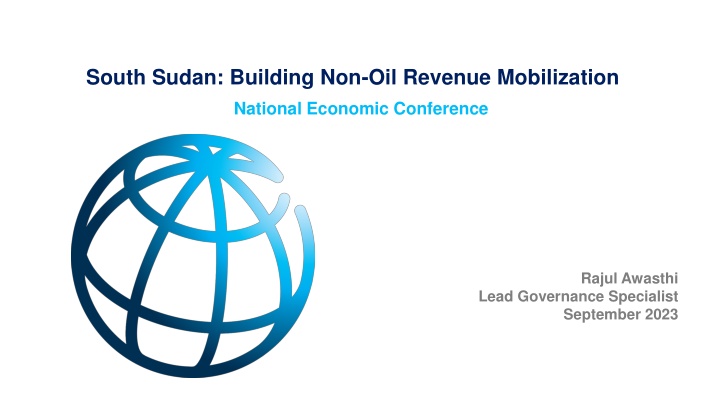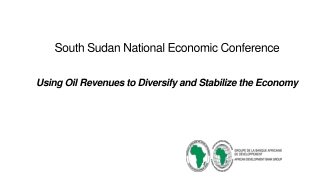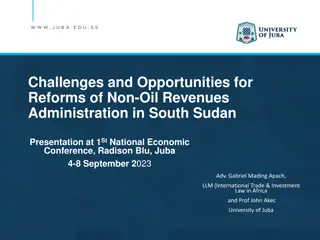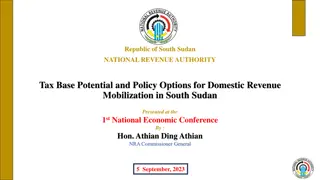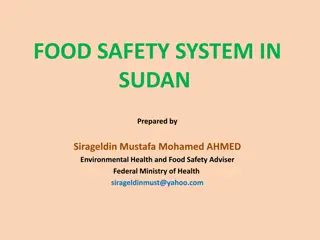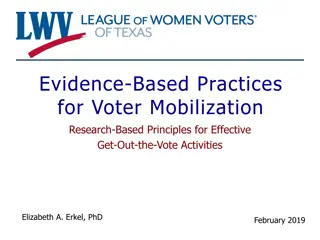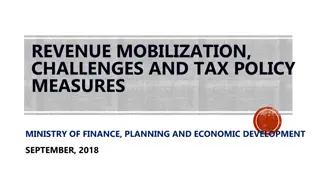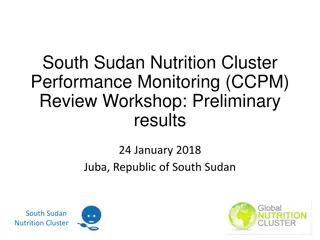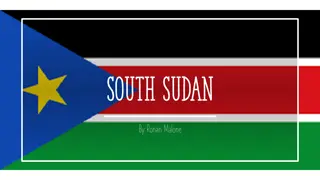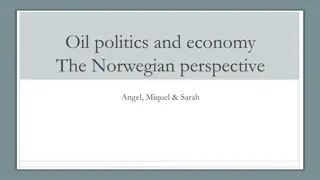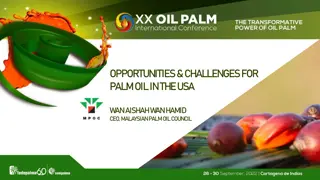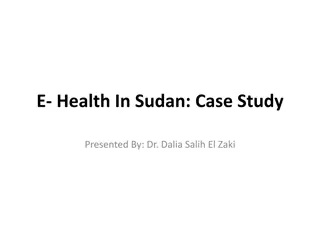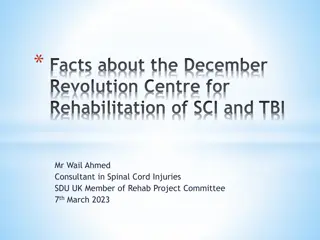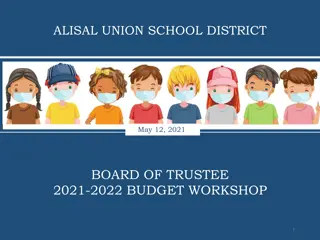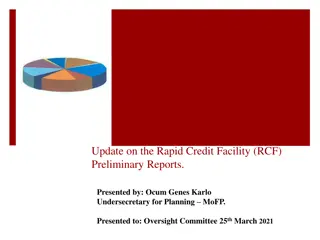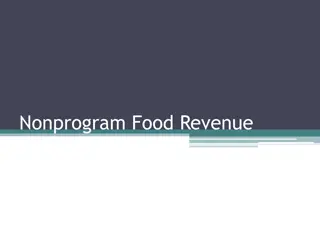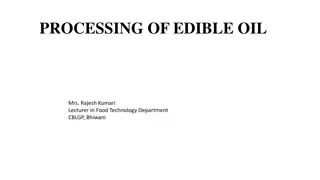South Sudan's Non-Oil Revenue Mobilization Challenges
South Sudan faces significant challenges in generating non-oil revenues, with a heavy reliance on personal income tax and limited utilization of other tax sources. The volatile nature of oil revenues underscores the importance of diversifying revenue streams for sustainable economic growth. Comparisons with countries like Nigeria highlight the potential for revenue gains through reforms. Enhancements in customs administration and achieving a minimum threshold of non-oil tax revenues are crucial for long-term economic stability and growth.
Download Presentation

Please find below an Image/Link to download the presentation.
The content on the website is provided AS IS for your information and personal use only. It may not be sold, licensed, or shared on other websites without obtaining consent from the author.If you encounter any issues during the download, it is possible that the publisher has removed the file from their server.
You are allowed to download the files provided on this website for personal or commercial use, subject to the condition that they are used lawfully. All files are the property of their respective owners.
The content on the website is provided AS IS for your information and personal use only. It may not be sold, licensed, or shared on other websites without obtaining consent from the author.
E N D
Presentation Transcript
South Sudan: Building Non-Oil Revenue Mobilization National Economic Conference Rajul Awasthi Lead Governance Specialist September 2023
OUTLINE OF THIS PRESENTATION 1. South Sudan Revenue Position a. South Sudan has one of the lowest non-oil revenues b. Oil revenues highly volatile c. South Sudan s tax revenues totally skewed toward PIT d. Non-oil revenues necessary for sustainable growth 2. Case Example: Nigeria a. Reform areas identified by World Bank b. Estimated potential revenue gains from reforms 2 CONFIDENTIAL: NOT TO CIRCULATE
SOUTH SUDAN HAS ONE OF THE LOWEST NON-OIL REVENUES IN THE WORLD OIL REVENUES ARE HIGHLY VOLATILE AND DO NOT PROVIDE FISCAL STABILITY South Sudan Government Revenues (percent of GDP) 40 35 30 25 20 15 10 5 0 2016-17 2017-18 2018-19 2019-20 2020-21 2021-22 2021-23 Oil Non-oil Total Source: IMF Article IV Reports, WB calculations 3 CONFIDENTIAL: NOT TO CIRCULATE
South Sudans domestic revenue profile is majorly skewed towards the PIT; other taxes are under-utilized PIT is the dominant tax; huge scope to increase other taxes Tax revenue as percent of total PIT 93.7 BPT 3.0 Sales 2.1 Excise 1.2 Source: NRA Data; World Bank calculations CONFIDENTIAL: NOT TO CIRCULATE
The average tax collections by tax instrument for AFR 31 Countries shows the tremendous potential SS has to increase tax-GDP Tax collections as percent of GDP by tax type 5 4.5 4 3.5 3 2.5 2 1.5 1 0.5 0 VAT PIT CIT SSC Excises etc Other Source: OECD Revenue Statistics Africa 2022
Improvements in Customs administration are also critical to increase revenues Customs Revenue at 22 percent is an important source 90.0% Other taxes 80.0% 70.0% 60.0% 50.0% 40.0% 30.0% Customs 20.0% 10.0% 0.0% 1 2 Source: NRA Data; World Bank calculations CONFIDENTIAL: NOT TO CIRCULATE
Research shows that sustainable economic growth needs a certain minimum level of non-oil tax revenues IMF Working Paper Tax Capacity and Growth: Is there a tipping point? Vitor Gaspar, Laura Jaramillo, Phillippe Wingender Key finding: The authors find that the answer to the question is Yes. The estimated tipping point is 12.75 percent of GDP, i.e., when non-oil tax to GDP reaches that level, a sustainable growth path is possible. CONFIDENTIAL: NOT TO CIRCULATE 7
According to the IMF South Sudan is starting to reap the rewards of reform. For example: Basic revenue administration institutions and infrastructure have been set up. Tax and customs laws and regulations have been enacted. Administrative procedures have been put in place for taxpayer registration. Collection enforcement and taxpayer audits have begun. A viable large taxpayer unit has been set up. Operations at the largest border post have been improved. Basic information technology systems have been implemented including a higher per capita availability of computers for the revenue administration. Source: International Monetary Fund CONFIDENTIAL: NOT TO CIRCULATE 8
Case example: Nigeria Strategy to build revenue mobilization CONFIDENTIAL: NOT TO CIRCULATE 9
Nigeria: Key Areas of Reform Identified to Improve Revenue Mobilization Value-added tax administration and plugging compliance gaps Excise reforms through policy measures Rationalizing tax expenditures in the corporate income tax Reforms have potential to raise 4-6 trillion Naira ~7% of GDP Personal income tax revenue raising measures and access to data Property tax reforms; updating/completing property records CONFIDENTIAL: NOT TO CIRCULATE
WB estimate: Nigerias Non-oil Revenue Potential Twice Current Collection, 2019 Best Case Scenario 1. Excise reforms through policy measures; 0.6% of GDP/NGN 930 billion from alcohol, cigarettes 0.4% of GDP/NGN 500-600 billion from airtime, petrol, diesel 2. Rationalizing CIT incentives; 0.7% of GDP/NGN 1,000 billion (more from addressing compliance gaps) 3. VAT administration reforms; 0.4% of GDP/NGN 600 billion from full implementation of rate increase 0.4 1.4% of GDP/NGN 800 billion to 2,000 billion from closing compliance gaps 0.2%+ of GDP/NGN 300 billion from petrol and diesel, taxation of cross-border digital 4. Property tax reforms in states; 0.2% of GDP/NGN 300 billion in the medium-to-long term Potential Revenue Collection for 2019 (Billion NGN) Note: The columns in blue capture actual oil and non-oil revenue collected. The column in orange captures additional revenue that we project could have been collected. Source: https://www.firs.gov.ng/TaxStatisticsReports CONFIDENTIAL: NOT TO CIRCULATE
